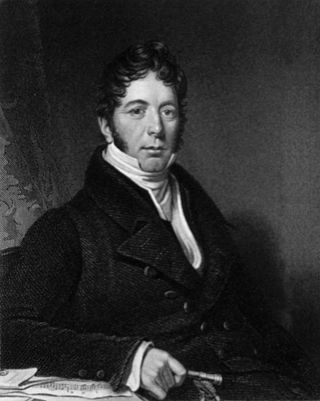
Caroline of Brunswick-Wolfenbüttel was Queen of the United Kingdom of Great Britain and Ireland and Queen of Hanover from 29 January 1820 until her death in 1821 as the estranged wife of King George IV. She was Princess of Wales from 1795 to 1820.

Johann Christian Bach was a German composer of the Classical era, the eighteenth child of Johann Sebastian Bach, and the youngest of his eleven sons. After living in Italy for five years (1757–1762), Bach moved to London, where he became known as "The London Bach". He is also sometimes known as "The English Bach", and during his time spent living in the British capital, he came to be known as John Bach. He is noted for playing a role in influencing the concerto styles of Haydn and Mozart. He contributed significantly to the development of the new sonata principle.
Contemporary classical music is Western art music composed close to the present day. At the beginning of the 21st century, it commonly referred to the post-1945 modern forms of post-tonal music after the death of Anton Webern, and included serial music, electronic music, experimental music, and minimalist music. Newer forms of music include spectral music, and post-minimalism.

"The Anacreontic Song", also known by its incipit "To Anacreon in Heaven", was the official song of the Anacreontic Society, an 18th-century gentlemen's club of amateur musicians in London. Composed by John Stafford Smith, the tune was later used by several writers as a setting for their patriotic lyrics. These included two songs by Francis Scott Key, most famously his poem "Defence of Fort McHenry". The combination of Key's poem and Smith's composition became known as "The Star-Spangled Banner", which was adopted as the national anthem of the United States of America in 1931.

Samuel Webbe was an English composer.

James Nares was an English composer of mostly sacred vocal works, though he also composed for the harpsichord and organ.
A glee is a type of English part song composed during the Late Baroque, Classical, and early Romantic periods. The respectable and artistic character of glees contrasts with the bawdiness of the many catches which continued to be composed and sung well into the early years of the 19th century.

John Wall Callcott was an eminent English composer.

St Pancras Old Church is a Church of England parish church on Pancras Road, Somers Town, in the London Borough of Camden. Somers Town is an area of the ancient parish and later Metropolitan Borough of St Pancras.

Sir John Andrew Stevenson was an Irish composer. He is best known for his piano arrangements of Irish Melodies with poet Thomas Moore. He was granted an honorary doctorate by the University of Dublin and was knighted in April 1802.
In music, a catch is a type of round or canon at the unison. That is, it is a musical composition in which two or more voices repeatedly sing the same melody, beginning at different times. Generally catches have a secular theme, though many collections included devotional rounds and canons.
Malcolm MacDonald, also known by the alias Calum MacDonald, was a British author, mainly about music.
William Savage was an English composer, organist, and singer of the 18th century. He sang as a boy treble and alto, a countertenor, and as a bass. He is best remembered for his association with the composer George Frideric Handel, in whose oratorios Savage sang.
Brian Robins is an English nonfiction author and editor.
John Marsh was an English gentleman, composer, diarist and writer born in Netherseal, Derbyshire, England. A lawyer by training, he is known to have written more than 350 compositions, including at least 39 symphonies. While today known primarily for his music, he also had strong interest in other fields, including astronomy and philosophy, and wrote books about astronomy, music, religion, and geometry.
Richard John Samuel Stevens was an English composer and organist.
William Paxton (1737–1781) was an English composer and cellist. He composed several sets of duets and solos for the cello, including six duos for two cellos, eight duos for violin and cello, six solos for violin, four solos for violin and two for the cello, twelve easy lessons for cello. and six solos for cello. Paxton's brother Stephen also composed for the cello. Paxton won prizes for two canons: "O Lord in Thee" (1779), and "O Israel, trust in the Lord" (1780). His glee, "Breathe soft, ye winds", was also a favourite for many years.

John Danby was an English composer of glees, of which he wrote around 92, some of which were only published after his death. Among the most popular of his glees are Awake, AEolian lyre! and Let Gaiety Sparkle. He won 10 prizes for his compositions from the Catch Club between 1781 and 1794. He was a pupil of Samuel Webbe and a friend of Turner. For many years he was employed as the organist at the chapel of the Spanish Embassy in London. However near the end of his life he suffered from paralysis of the limbs.
The Hibernian Catch Club is a dining and catch musical club founded c.1680 in Dublin, Ireland by the vicars-choral of Christ Church and St. Patrick's Cathedrals. It has been referred to as the oldest surviving musical society in Europe.

The statue of John Betjeman at St Pancras railway station, London is a depiction in bronze by the sculptor Martin Jennings. The statue was designed and cast in 2007 and was unveiled on 12 November 2007 by Betjeman's daughter, Candida Lycett Green and the then Poet Laureate Andrew Motion to commemorate Betjeman and mark the opening of St Pancras International as the London terminus of the Eurostar high-speed rail link between Great Britain and mainland Europe. The location memorialises the connection between St Pancras station and Betjeman, an early and lifelong advocate of Victorian architecture.










